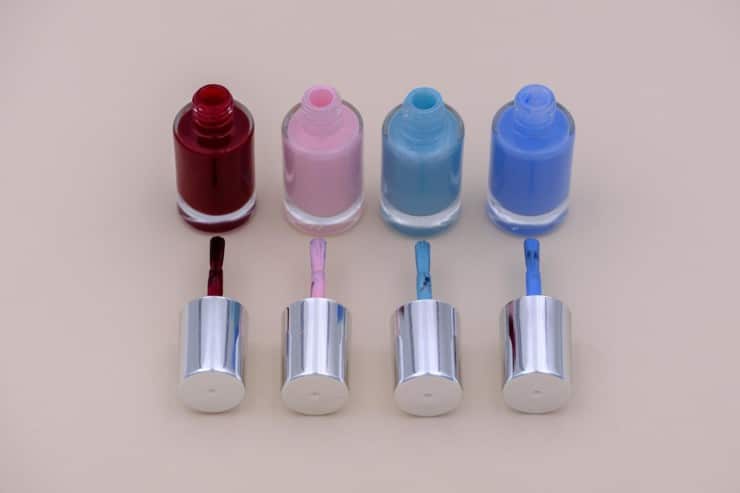Why is There a Strange Mothballs Smell in My House?
Have you ever entered your house and encountered the unique odor of mothballs?
You know, that distinct scent that immediately transports you back to your grandma’s closet full of vintage clothing.
What’s even more baffling is when there are no mothballs in sight and yet, their ghostly presence lingers on.
Well, you’re not alone – many people have experienced this mysterious phenomenon and it’s time we get to the bottom of it.
Let’s unravel this enigma together and figure out what might be causing that strange aroma in your abode.
Like a master detective following clues, we’ll explore possible sources for this olfactory mystery so you can finally breathe freely again without having to deal with that pesky odor lurking around every corner.
Soon enough, you’ll gain the upper hand over these invisible culprits and banish them from your home once and for all!
Investigating Common Culprits

As you wander through your home, that peculiar mothball scent stops you in your tracks.
You’re not alone; household odors can be a common nuisance and disrupt the comfort of our living spaces.
Before we jump to conclusions, let’s investigate some potential culprits behind this mysterious smell.
Being aware of these sources will allow you to take control of odor elimination, ensuring a fresh and pleasant environment for everyone.
Begin by examining areas where clothing or linens are stored. It’s possible that someone has used actual mothballs without your knowledge, or perhaps an item purchased from a thrift store still carries the lingering scent.
Don’t forget to check those hidden nooks like closets, attics, and basements – all prime locations for stashing away items with strong smells.
If you find any suspicious objects emitting the unpleasant aroma, remove them immediately and give the area a thorough cleaning.
Keep in mind that sometimes what we perceive as one smell might actually be another entirely different odor masked or mixed with other scents present in our homes.
For instance, mold growth could produce musty smells that mimic mothball-like aromas when combined with other household fragrances.
Investigate damp corners or poorly ventilated spaces for signs of mold and address any water damage promptly to prevent further issues.
By understanding how various factors contribute to unwanted household scents and taking action accordingly, you’ll soon master the art of maintaining a home free from pesky olfactory intruders!
Hidden Mold Or Mildew Issues
Mold may be the mysterious malefactor manifesting that mothball-like smell in your home.
Hidden mold or mildew issues can often produce a musty, pungent odor reminiscent of old mothballs.
Mold identification is crucial for ensuring your home’s safety and maintaining good indoor air quality.
Mildew removal becomes necessary when its presence affects not just the aesthetics but also poses potential health hazards to you and your family.
To tackle this troublesome issue effectively, consider these three steps:
- Inspect: Begin with a thorough inspection of your home to identify any visible signs of mold or mildew growth. Check damp areas such as bathrooms, basements, attics, and around appliances like washing machines.
- Test: If there are no obvious signs of mold or mildew yet the odor persists, it might be worth investing in a professional mold test kit or hiring an expert to detect hidden sources within walls, ceilings, or under flooring.
- Remediate: Once identified and confirmed as either mold or mildew, plan on taking appropriate remediation measures including cleaning affected surfaces with specialized products or seeking help from professionals if required.
By being proactive about hidden mold and mildew issues in your house, you’ll not only eliminate that strange mothball scent but also create a healthier living environment for yourself and loved ones.
Unusual Chemical Reactions

I’m sure many of us have experienced something strange and unfamiliar in our homes before, like a mothball smell.
That smell is likely caused by a chemical reaction taking place.
There are three main types of chemical reactions that could be responsible for this smell: acid-base reactions, oxidation-reduction reactions, and photochemical reactions.
Acid-base reactions involve the transfer of a proton from one molecule to another, oxidation-reduction reactions involve a transfer of electrons, and photochemical reactions involve the absorption of light energy.
Let’s take a closer look at each of these reactions to see which one is causing that strange smell.
Acid-Base Reactions
It’s not every day that one stumbles upon an unusual chemical reaction, especially those involving acid-base reactions.
Acidic solutions and their corresponding bases often interact in subtle ways, leading to some intriguing phenomena such as the strange mothball smell in your house.
Let’s dive deeper into these captivating events and explore how they’re connected to acid-base interactions.
One of the most compelling aspects of acid-base reactions is their role in base detection.
For example, when an acidic solution comes into contact with a basic substance, it can neutralize it while producing water and salt.
This process can be used as a means to identify unknown substances or even track down elusive odors like that pesky mothball scent you’ve been noticing lately.
By understanding the delicate dance between acids and bases, we can begin to unravel the mysteries behind these peculiar occurrences – all while satisfying our innate desire for mastery over the world around us.
In certain cases, volatile organic compounds (VOCs) may also play a part in creating unexpected smells within our homes.
Some of these VOCs are products of specific acid-base reactions which emit distinct odors similar to mothballs.
These airborne chemicals could originate from various sources such as cleaning agents, paint solvents or even indoor mold growth due to excess humidity.
As we continue to uncover more about the fascinating interplay between acidic solutions and base detection, we might just find ourselves better equipped to pinpoint the source of that enigmatic odor permeating throughout our living spaces.
Oxidation-Reduction Reactions
As we delve deeper into the world of unusual chemical reactions, it’s essential to consider another fascinating area: oxidation-reduction reactions, commonly known as redox reactions.
These processes involve the transfer of electrons between two species and can have a significant impact on various aspects of our lives – including those mysterious household smells.
You might be surprised to learn that some common odors you encounter daily are directly related to redox reactions occurring right under your nose.
Redox reactions play an integral role in many everyday phenomena, from rust forming on metal surfaces to batteries powering our electronic devices.
By understanding these captivating events, we gain insight into how they contribute to certain scents within our homes.
For instance, the familiar smell of bleach is linked to its potent oxidizing properties that effectively break down stains and kill bacteria.
On the other hand, sulfurous odors often associated with rotten eggs result from reduction processes involving sulfur-containing compounds.
So next time you’re faced with an unexplained aroma wafting through your living space, take a moment to appreciate the intricate dance of electrons happening around you.
Who knows – by embracing this newfound knowledge of redox reactions, you might just find yourself better equipped to tackle those perplexing household smells head-on.
Photochemical Reactions
As we continue our journey into the realm of unusual chemical reactions, let’s shed some light on another fascinating area: photochemical reactions.
These intriguing processes are driven by the absorption of light energy, transforming molecules into new substances and generating various effects in our surroundings.
Just as redox reactions can be responsible for those peculiar household smells, photochemical reactions contribute to a plethora of visual phenomena and even carry potential dangers.
In fact, you’ve likely encountered numerous examples of photochemical reactions without realizing it.
From sunscreens protecting your skin against harmful UV rays to glow-in-the-dark toys capturing your imagination, these light-induced reaction sources are everywhere around us.
However, it’s crucial not to overlook the possible perils – such as ozone depletion and smog formation – that stem from certain photochemical processes occurring both naturally and due to human activities.
So next time you witness an awe-inspiring display of colors during a sunset or marvel at luminescent creatures in nature documentaries, take a moment to appreciate the captivating world of photochemistry at play.
By embracing this knowledge alongside understanding redox chemistry, you’ll undoubtedly gain a deeper appreciation for the complex dance of elements shaping our lives through these extraordinary chemical reactions.
Damaged Or Decaying Materials
Now that we’ve explored unusual chemical reactions, let’s delve into another potential source of that strange mothballs smell in your house: damaged or decaying materials.
As various materials within a home age and deteriorate, they can emit unpleasant odors.
These decaying smells may resemble the scent of mothballs, leading to confusion about their origin.
Material deterioration is an inevitable part of any building’s life cycle.
Structures built with organic materials such as wood are particularly susceptible to decay over time due to factors like moisture, temperature fluctuations, and insect infestations.
To help you identify possible sources of material breakdown in your home, here’s a table outlining common culprits:
| Material | Causes of Deterioration | Potential Odor Sources |
|---|---|---|
| Wood | Rotting from moisture exposure | Moldy or musty scents |
| Drywall | Water damage | Musty odor |
| null | null | |
| Insulation | Rodent infiltration or water damage | Urine-like smell |
In light of this information, it becomes clear how decaying materials might be responsible for that puzzling mothball aroma pervading your home.
Investigating these areas could reveal hidden damage and provide insight on how best to address the issue.
By ensuring proper maintenance and promptly addressing signs of material deterioration, you’ll not only prevent unwanted decaying odors but also protect the structural integrity and longevity of your beloved abode.
Pest Infestations And Prevention

Did you know that nearly 84% of U.S. homeowners have experienced a pest problem in the past year?
That’s an alarming number, and it makes one wonder about the effectiveness of traditional pest deterrents.
The mothball smell in your house could be indicative of infestation signs, as these chemicals are known to repel pests like moths, rodents, and other critters.
It’s essential for homeowners to recognize potential infestations early on so they can take action before any serious damage is done.
While many people turn to mothballs or other chemical solutions as their go-to pest deterrents, there are several non-toxic options available that won’t leave your home smelling like a grandma’s attic.
For example, integrated pest management (IPM) focuses on creating an inhospitable environment for pests by sealing up cracks where they might enter, maintaining cleanliness around food sources, and using natural repellents such as diatomaceous earth or boric acid.
By employing IPM strategies alongside more conventional approaches like traps or bait stations, you’ll achieve better long-term results while minimizing harmful side effects.
The key to mastering control over unwanted guests lies in understanding the unique behaviors and preferences of each individual species.
As a homeowner with a subconscious desire for mastery in this area, learning how different pests operate will empower you to make wiser decisions when selecting appropriate prevention methods.
Remember to stay vigilant against possible infestation signs—whether it’s unusual smells like mothballs or telltale droppings—and never hesitate to seek professional assistance if needed.
Frequently Asked Questions
Can certain types of food or cooking contribute to the mothball smell in my house?
Absolutely, certain types of food or cooking can contribute to the mothball smell in your house.
Culinary causes may include spices like cloves, cinnamon, and star anise, which produce a similar odor when used in large amounts.
Additionally, some ingredients like naphthalene-rich onions or garlic might give off that peculiar scent during preparation or storage.
To combat this issue while still enjoying your favorite dishes, consider using mothball alternatives such as cedar blocks, lavender sachets, or even white vinegar for natural odor elimination.
Mastering these techniques will not only enhance your culinary prowess but also ensure a pleasant-smelling home environment!
Are there any health risks associated with constantly inhaling a mothball-like odor in my home?
Inhaling a mothball-like odor in your home constantly can feel like you’re living inside an old wardrobe, but the health implications it brings are no laughing matter.
Identifying and addressing these odor sources is crucial to ensuring that your living space remains safe and pleasant for everyone who steps foot inside.
When exposed to such smells on a regular basis, one might experience respiratory issues or other ailments related to poor air quality.
So, take charge of your indoor environment by investigating potential causes behind this peculiar scent and safeguarding what truly matters – your well-being and ultimate mastery over maintaining a healthy home.
Can the mothball smell be caused by a malfunctioning appliance or electrical issue?
It’s possible that the mothball smell in your home could be caused by malfunctioning appliances or electrical issues.
Sometimes, when electrical components overheat or experience a short circuit, they can emit an odor similar to mothballs.
This typically occurs due to faulty wiring, deteriorating insulation around wires, or even overloaded circuits.
Make sure to check your appliances for any signs of damage and keep an eye on your fuse box for overheating indicators.
If you suspect an issue with your electrical system, it’s essential to call a professional electrician immediately to ensure safety and prevent potential fire hazards in your quest for mastery over household mysteries.
How can I determine if the source of the odor is coming from outside of my house or is actually present inside?
The quest to uncover the odor origins in your home can feel like a thrilling mystery, leaving you eager for answers.
To determine if the smell is actually coming from inside or wafting in from outside, you’ll want to hone your detective skills with some strategic smell detection techniques.
Begin by closing off all windows and doors, isolating each room one at a time, taking note of any changes in the intensity of the mothball scent.
Then, venture outdoors to explore around your property’s perimeter, sniffing out potential external sources.
As you piece together this olfactory puzzle, not only will you inch closer toward mastery over the enigmatic aroma invading your space but also reclaim control over your home’s atmosphere.
What are some long-term solutions to eliminate the mothball smell from my house for good?
To effectively eliminate that pesky mothball smell from your home for good, it’s essential to focus on long-term solutions like mold prevention and air purifiers.
By addressing any potential moisture issues and ensuring proper ventilation, you’ll be well on your way to preventing the growth of odor-causing mold.
Investing in a high-quality air purifier with an activated carbon filter will help neutralize those lingering odors while also improving your overall indoor air quality.
Not only will these steps leave your home smelling fresh and clean, but they’ll also empower you with a sense of mastery over maintaining a healthy living environment.
Final Thoughts
It’s essential to identify the source of that persistent mothball smell in your home.
Remember, one study found that 34% of people reported annoyed or irritated reactions to certain odors in their homes.
So take charge and locate the cause, whether it be food-related, a health risk, a malfunctioning appliance or an external issue.
By finding long-term solutions to eliminate this unpleasant odor, you’ll not only improve your living environment but also safeguard your well-being.







